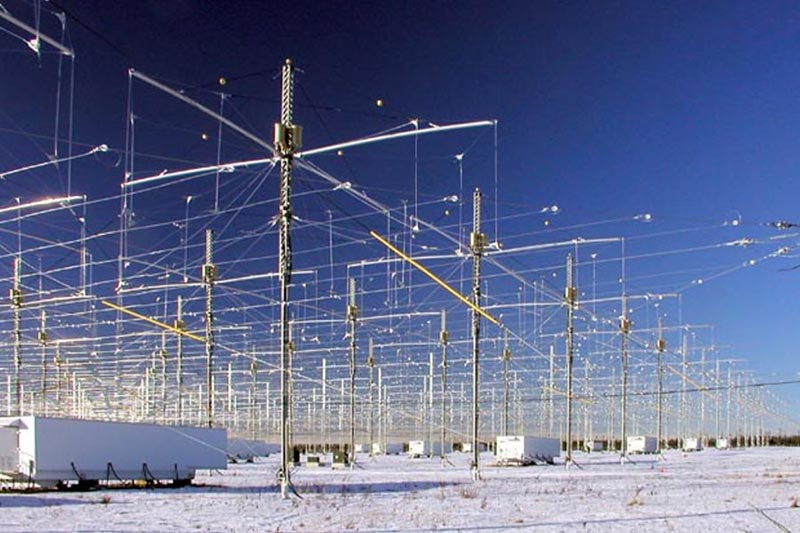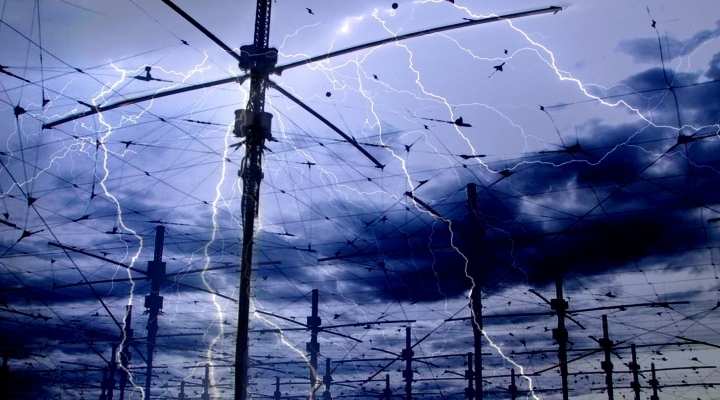HAARP: Alaska’s Research Program Around Which Conspiracy Theories Abound
HAARP, also known as High-Frequency Active Auroral Research Program, was a scientific research program designed to analyze Earth...

HAARP, also known as High-Frequency Active Auroral Research Program, was a scientific research program designed to analyze Earth’s ionosphere and the potential to develop the ionospheric enhancement technology for radio communications and surveillance.
In the initial phase, it was mutually funded by the University of Alaska Fairbanks (UAF), the US Navy, the Defense Advanced Research Projects Agency (DARPA), and the US Air Force.
Began in 1993, this research program operated an important sub-arctic facility HAARP Research Station which was located on an Air Force-owned site in Gakona, Alaska. The facility essentially constituted of a large radio transmitter and an antenna designed to function in the shortwave band.
HAARP’s Establishment, Temporary Closure, Permanent Shutdown & Comeback

The construction of the HAARP Station started in 1993. Designed & built by BAE Systems Advanced Technologies, the Ionospheric Research Instrument (IRI) was completed in 2007. By 2008, HAARP had spent nearly $250 million in tax-funded construction and operations.
In 2013, it was closed on a temporary basis because of “a contractor regime change”. In 2014, HAARP made an announcement that it would have a permanent shutdown later in the year. With experiments ending in summer 2014, its complete shutdown was postponed to May 2015. In August 2015, the control of the facility and all of its equipment were transferred to the University of Alaska Fairbanks.
The facilities were made available to the scientists on a pay-per-use basis and it is $5,000 an hour. In August 2017, HAARP will be hosting its second annual open house.
What Was HAARP Station Meant for?

In the HAARP project, a 3.6 MW signal (pulsed or continuous) was directed in the 2.8–10 MHz region into the ionosphere. The effects of the transmission and recovery period (if any) could be analyzed using associated instrumentation such as VHF and UHF radars, HF receivers, and optical cameras. It also studied how the natural ionosphere affects radio signals.
The most important instrument at the HAARP Station is the Ionospheric Research Instrument (IRI) which is a high-power RF transmitter facility operating in the HF band. It was used to temporarily excite a limited region of the ionosphere.
Several Useful Scientific Research Have Been Conducted at HAARP

The primary purpose of HAARP was to conduct scientific research on the uppermost portion of the atmosphere, i.e., ionosphere. The research at the HAARP facility has helped the US military in improving the communications with its submarine fleets through the transmission of radio signals over long distances.

Here are a few of many research conducted by HAARP:
- Stimulated electron emission observations
- The response and recovery of the ionosphere from solar flares and geomagnetic storms
- Radio observations of meteors
- The effect of ionospheric disturbances on GPS satellite signal quality
- The Lunar Echo experiment
- Plasma line observations
- The impact of the meteor shower on the ionosphere
- Gyro frequency heating research
- Producing high-density plasma clouds in the outer region of Earth's atmosphere
HAARP is the Alleged “Mind-Control Lab” & “Weather-Altering Superweapon”

HAARP has been a target of several conspiracy theorists who accused that it weaponized the weather, caused chemtrails, and even a mind-control lab. However, the scientists say that advocates of this theory are "uninformed" since these allegations go beyond the abilities of the HAARP facility.

Some of the claims include:
- The author of Angels Don't Play This HAARP Nick Begich Jr. claimed that HAARP could cause earthquakes and transform the upper atmosphere into a giant lens such that "the sky would actually appear to burn." He even has a website asserting that HAARP is a mind-control device.
- HAARP has also been called the alleged force behind chemtrails
- The former Governor of Minnesota Jesse Ventura suspected that the government was using the site either for weather manipulation or for bombarding people with mind-controlling radio waves. An Air Force spokeswoman reported that Ventura’s official request to visit the HAARP station was rejected.
Popular Posts
What Is Trypophobia – A Disgust More Than Fear
"I can't really face small, irregularly or asymmetrically placed holes, they make me like, throw up in my mouth, cry a little bi...
Chandan Roy
16 Interesting Facts About Ambidextrous People
A lefty or left-handed uses his left hand more naturally and dominantly than the right hand. And the righty or right-handed is o...
Ethan Stephans
20 Interesting Facts About Meteoroid, Meteor and Meteorite
Watching celestial objects is a true delight. It is still fun to catch a sight of shooting stars when we grow up. A second of th...
Swati Bhandari








